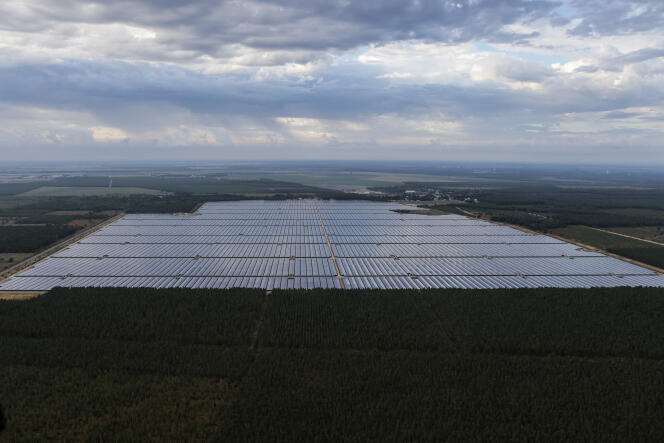


To get the project off the ground, the French solar energy industry is planning to repurpose a former airfield. Currently, the site, which has not been in use since 2016, is devoid of photovoltaic panels. The vast expanse, approximately the size of 350 football pitches, spans three communes in the Oise department in northern France: Creil, the main town, but also Verneuil-en-Halatte and Apremont. Over the next two years, some 350,000 panels are expected to be installed there.
With a maximum output of around 200 megawatts at its peak, the future power plant is due to be the second largest in the country, behind the Cestas plant in southwestern France that is already in operation. According to Photosol, the project's developer and a subsidiary of Rubis – a group previously specializing in hydrocarbons – it will be able to generate an amount of electricity that can meet the yearly energy needs of 85,000 households.
A notable feature of this project is the former runway that was once used by the Creil military base (air base 110, according to the national numbering system), which still operates on a neighboring plot, focusing mainly on military intelligence and satellite imagery.
The inactive site still belongs to the Armed Forces Ministry, which has leased it out. When contacted, the ministry did not specify the amount of rent it expects to receive. The authorization to occupy the public land is for 30 years, until 2050.
The former runway provides a possible site for solar energy, which needs space. Antoine Dubos, Photosol's development director, confirmed that "our company prioritizes" areas that have previously been developed. First of all, rather than having to use up agricultural land, rehabilitating degraded land can avoid certain conflicts of use.
"Degraded land, disused roads, railways or rivers, large rooftops and parking lots": in its French energy and climate strategy, out for consultation since November 2023, the government lists these areas as priorities for photovoltaic deployment.
Yet, even on previously developed sites, the completion of any construction project often takes longer than originally anticipated. Dubos conceded that reaching "a point of equilibrium," where most post parties are reasonably content, often takes time. "These sites generally present complex environmental challenges, as they have often been undeveloped for years. This limits the area available for development, or can even prevent any project from going ahead."
You have 50% of this article left to read. The rest is for subscribers only.
